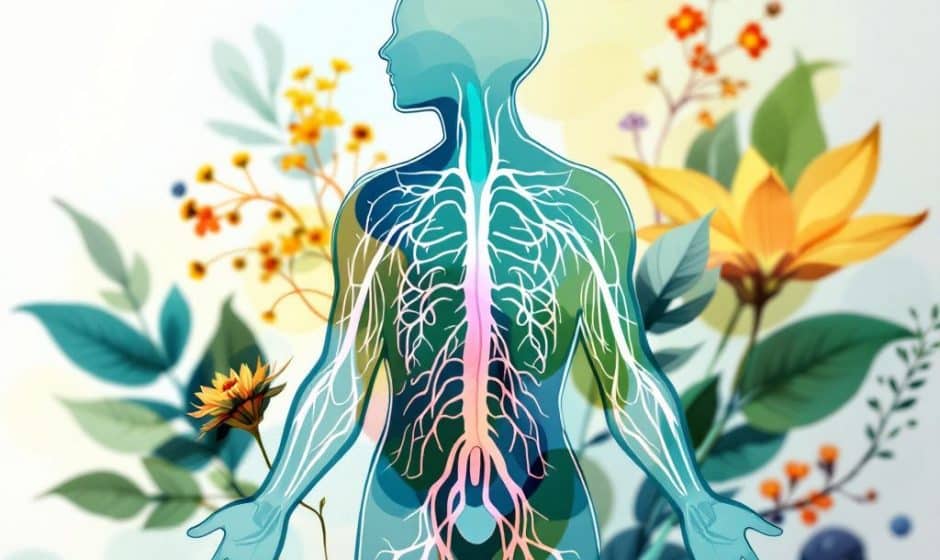Hey there, friend! You’ve probably heard whispers about the power of supporting your lymphatic system for better health, and maybe it got you wondering—what’s all this buzz about lymph flow, and how does it tie into hormone regulation? You’re in the right place to unravel these mysteries!
Let’s dive in. So, here’s the deal: Your body is this incredible machine working non-stop to keep everything in balance. One super important (but often overlooked) part of this machinery is the lymphatic system. It’s not just a network of vessels and nodes; it’s a key player in your body’s detox team. Think of it as a river flowing through the landscape of your body, cleansing and carrying away waste. When it’s in great shape, your whole world feels lighter — literally.
Why Lymph Flow Matters for Hormone Regulation
Lymph flow and hormone regulation are best buddies. And when they aren’t getting along? Oh boy—expect some chaos. When your lymphatic system isn’t functioning optimally, toxins and waste products can build up, throwing your lovely hormones into a tizzy. Whether it’s fluctuating moods, acne breakouts, or even those stubborn few pounds clinging to your waist—inefficient lymph flow might have a role in all of it. Now that we know why it’s crucial, let’s roll up our sleeves and see what we can do about it.
Understanding the Lymphatic System
First, let’s break it down a bit. The lymphatic system is part of the circulatory and immune systems. Unlike your blood, which gets pumped through your body by your heart, the lymphatic system doesn’t have a central pump. It relies on muscle movement, gravity, and other forces to move lymph fluid through its many channels.
Key Components of the Lymphatic System
- Lymph: A clear fluid full of white blood cells, nutrients, and waste products.
- Lymph Nodes: Little detox factories dotted along your lymphatic vessels, filtering and trapping foreign particles.
- Lymph Vessels: Channels that carry lymph throughout your body.
- Spleen and Thymus: Other critical organs that filter out old blood cells and help with immune responses.
How it Works with Hormones
Your lymphatic system helps your body maintain hormonal balance by moving excess hormones and waste products out of your tissues. It’s like a personal cleanup crew for your endocrine system, which is responsible for hormone production.

Simple Ways to Boost Lymphatic Flow
Let’s ease into it. You don’t need to overhaul your entire life; just try incorporating these straightforward habits into your routine. There’s no need for over-the-top rituals—simple actions can make a big difference!
1. Keep Moving!
Movement is magic for lymph flow. Your lymphatic system needs you to get moving since muscle contraction aids lymph circulation.
- Walk more: Whether it’s a short stroll in the park or fancy footwork in your living room, every step helps.
- Try rebounding: Yep, bouncing on a mini-trampoline works wonders for lymph flow. Fun, right?
- Yoga and stretching: Gentle movements and deep breathing encourage your lymph to flow freely.
2. Dry Brushing
Grab a natural bristle brush and give this a try:
- Brush your skin gently before showering, starting from your feet and moving upwards toward your heart.
- Focus on long sweeping motions toward the core. It’s soothing and a great way to stimulate your lymphatic system.
3. Stay Hydrated
Drink up, sweetheart! Water helps keep that lymph fluid flowing smooth as silk. Aim for at least 8 cups a day. Signal your body you’re here to hydrate and flush out the junk.
4. Deep Breathing
Take a moment throughout the day to inhale deeply through your nose and exhale slowly through your mouth. Deep breathing expands your diaphragm, massaging lymphatic tissue to help move fluid.

5. Eat for Lymph Health
Your diet can be your ally in promoting lymphatic flow.
- Pile up on fruits and veggies: Especially raw vegetables that are packed with digestive enzymes.
- Incorporate healthy fats: Think avocados, nuts, and seeds to support cell membranes.
- Spices and herbs: Ginger, turmeric, and garlic can be beneficial.
Lymph Flow and its Impact on Common Health Concerns
With puff-wise attention to boosting lymph flow, hormones start playing nice again. Say goodbye to some widespread dilemmas aggravated by poor lymph function, like:
- Stress and anxiety: With enhanced detox efficiency, experience clearer mental states and better mood regulation.
- Digestive issues: Regular detox results in better digestion and less bloating.
- Chronic fatigue: Unload your body of accumulated toxins to see energy levels rise.
Now, implementing this can seem overwhelming, but just remember, you don’t need to do everything all at once. Start where it feels right for you.
Common Mistakes in Lymph Flow Practices – Avoid These!
We’ve talked about the ‘do’s’, but how about the ‘don’ts’? These are some pitfalls to watch out for because nobody wants to put in the effort and miss the benefits because of a simple oversight.
1. Neglecting Hydration
No need to shame yourself over that extra coffee, but make sure you counterbalance it with good ol’ H2O. Remember, staying hydrated is pivotal.

2. Overdoing Exercise
Exercise is essential, but too much can paradoxically stress your system rather than support it. Listen to your body’s signals. A little goes a long way.
3. Skipping the Stretching
Sometimes we get all gung-ho about cardio and strength, but stretching takes a backseat. Incorporate regular stretching to keep things flexible and flowing.
4. Inconsistent Diet
Ad hoc healthy eating won’t cut it. Consistency is the golden chalice here. Try making small sustainable changes—impacts are more profound when they become part of your daily rhythm.
Combining Practices for Maximum Effect
The beauty of these activities is that they complement each other wonderfully. Imagine starting your morning with a big glass of water, followed by a quick dry brush session, and a gentle stretching routine or a walk. You’re setting yourself up for a day flowing with energy and balance.
Sample Lymph Flow Morning Routine
- 7:00 AM: Wake up and hydrate with two full glasses of water.
- 7:15 AM: Dry brush session followed by a soothing shower.
- 7:30 AM: Enjoy a nourishing breakfast with lots of fresh fruits and nuts.
- 8:00 AM: Head out for a 15-minute walk or light exercise.
- Throughout the day: Remember those deep breaths and sit for a few extra bouts of belly breathing to keep stress at bay.
There you have it, a roadmap to align your body’s natural processes for improved hormone regulation via enhanced lymph flow. Sure, every ‘body’ is unique, and it might take a bit of trial and error to discover what works best for you. But hey, that’s all part of the journey. You’re improving your health in significant ways, even if it’s just baby steps. So embrace the process, sip that water, jump on that trampoline, and let your body thank you gently over time.
And whenever things feel stuck or stagnant, recall why you started—even the greatest rivers begin with just a few drops of rain. That powerful energy flowing isn’t just for nature—it’s within you, right now.
Frequently Asked Questions
What causes a hormonal imbalance?
A hormonal imbalance can be caused by natural changes or stages in your life, including puberty, pregnancy, perimenopause, and menopause. Additionally, hormone levels can dramatically decrease after a partial or full hysterectomy. Other causes include tumors, adenomas, and autoimmune diseases that affect the endocrine glands[1][5][3).
What are the signs and symptoms of a hormonal imbalance?
Signs and symptoms of a hormonal imbalance can include irritability and fatigue, mood swings and depression, skin dryness and loss of elasticity, water retention and weight gain, osteoporosis and joint pain, less interest in sex, insomnia and other sleep disorders, and memory issues and difficulty concentrating[1][5][3).
How does hormone replacement therapy help with hormonal imbalances?
Hormone replacement therapy helps by restoring stable hormone levels, leading to improved sleep, increased energy, enhanced memory, better concentration, elevated mood with fewer mood swings, smoother and more hydrated skin, increased interest in sex, better weight regulation, and protection of joints and bones[1][3][5).
What are the different types of hormone therapy available?
The different types of hormone therapy include systemic hormone therapy (delivered via pills, patches, rings, gels, or sprays), low-dose vaginal products (for vaginal and urinary symptoms), and bio-identical hormone replacement therapy (which mimics the body’s natural hormones and may have fewer side effects)[1][3][5).
References




